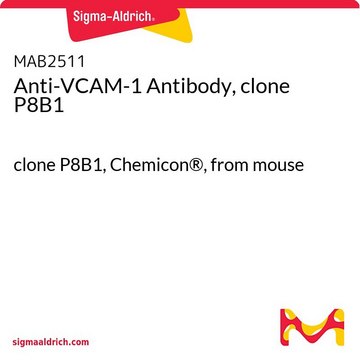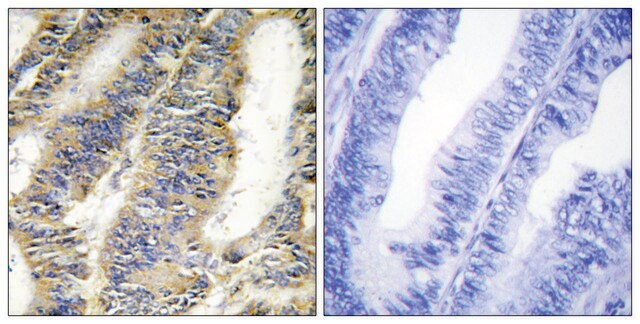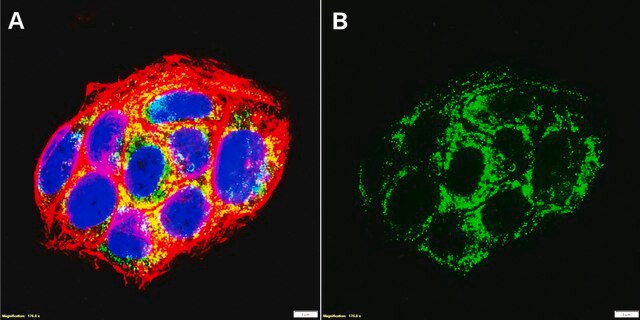詳細
We are committed to bringing you greener alternative products, which adhere to one or more of The 12 Principles of Green Chemistry.This antibody is Preservative-free, produced without the harm or sacrifice of animals and exceptionally stable to allow for ambient shipping and storage if needed and thus aligns with "Waste Prevention", "Designing Safer Chemicals" and "Design for Energy Efficiency".
Click here for more information.
ZooMAb® antibodies represent an entirely new generation of recombinant monoclonal antibodies. Each ZooMAb® antibody is manufactured using our proprietary recombinant expression system, purified to homogeneity, and precisely dispensed to produce robust and highly reproducible lot-to-lot consistency. Only top-performing clones are released for use by researchers. Each antibody is validated for high specificity and affinity across multiple applications, including its most commonly used application. ZooMAb® antibodies are reliably available and ready to ship when you need them.
特異性
Clone 1C11 is a ZooMAb® rabbit recombinant monoclonal antibody that specifically detects Plasminogen activator inhibitor 1 (PAI-1). It targets an epitope within 16 amino acids from the N-terminal half.
免疫原
KLH-conjugated linear peptide corresponding to 16 amino acids from the N-terminal half of human Plasminogen activator inhibitor 1 (PAI-1).
アプリケーション
Quality Control Testing
Evaluated by Western Blotting in Human umbilical vein endothelial cells (HUVEC) lysate.
Western Blotting Analysis: A 1:10,000 dilution of this antibody detected PAI-1 in Human umbilical vein endothelial cells (HUVEC) lysate.
Tested Applications
Western Blotting Analysis: A 1:1,000 dilution from a representative lot detected PAI-1 in lysate from U2OS cells and 1:10,000 dilution in Mouse placenta tissue lysate.
Affinity Binding Assay: A representative lot of this antibody bound PAI-1 peptide with a KD of 5.8 x 10-8 in an affinity binding assay.
Immunocytochemistry Analysis: A 1:100 dilution from a representative lot detected PAI-1 in Human umbilical vein endothelial cells (HUVEC).
Immunohistochemistry (Paraffin) Analysis: A 1:100 dilution from a representative lot detected PAI-1 in Human placenta tissue sections.
Note: Actual optimal working dilutions must be determined by end user as specimens, and experimental conditions may vary with the end user.
ターゲットの説明
Plasminogen activator inhibitor 1 (UniProt: P05121; also known as PAI, PAI-1, Endothelial plasminogen activator inhibitor, Serpin E1) is encoded by the PAI1 (also known as PLANH1, SERPINE1) gene (Gene ID: 5054) in human. PAI-1 is a member of the superfamily of serine-protease inhibitors and serves as a rapid acting inhibitor of tissue-type (tPA) and the urinary-type (uPA) plasminogen activators. It is a single chain glycoprotein that is synthesized with a signal peptide (aa 1-23), which is subsequently cleave off to produce the mature protein. It plays an essential role in fibrinolysis down-regulation and is responsible for the controlled degradation of blood clots. It is also involved in regulation of cell adhesion and spreading. It also plays a pivotal role in various acute and chronic pathophysiological processes, including cardiovascular disease, tissue fibrosis, cancer, and age-related diseases. Higher expression of PAI-1 is observed in the elderly and is also significantly enhanced in a variety of clinical conditions that are typical of the aging process, including obesity, insulin resistance, decreased immune responses, and increased inflammation. The increased expression of PAI-1 in vivo suppresses fibrinolysis that can lead to the pathological fibrin deposition and tissue damage. High PAI-1 plasma levels are consistently found in patients with severe sepsis but also with other acute or chronic inflammatory diseases such as atherosclerosis. Mutations in PAI1 gene are known to cause PAI-1 deficiency, a hematologic disorder characterized by increased bleeding after trauma, injury, or surgery. The bleeding defect is due to increased fibrinolysis of fibrin blood clots. Two isoforms of PAI-1 have been described that are produced by alternative splicing. This ZooMAb® recombinant monoclonal antibody, generated by our propriety technology, offers significantly enhanced specificity, Affinity™, reproducibility, and stability over conventional monoclonals. (Ref.: Machteld Sillen, M., and Declerck, PJ. (2021). Int. J. Mol. Sci. 22(5); 2721; Sillen, M., and Declereck, PJ. (2020). Front. Cardiovasc. Med. 7; 622473; Cesari, M., et al. (2010). Cardiovasc Ther. 28(5); e72–e91; Lee, MH., et al. (1993). Blood. 81(9); 2357-2362).
物理的形状
Purified recombinant rabbit monoclonal antibody IgG, lyophilized in PBS, 5% Trehalose, normal appearance a coarse or translucent resin. The PBS/trehalose components in the ZooMAb formulation can have the appearance of a semi-solid (bead like gel) after lyophilization. This is a normal phenomenon. Please follow the recommended reconstitution procedure in the data sheet to dissolve the semi-solid, bead-like, gel-appearing material. The resulting antibody solution is completely stable and functional as proven by full functional testing. Contains no biocide or preservatives, such as azide, or any animal by-products. Larger pack sizes provided as multiples of 25 µL.
再構成
300 µg/mL after reconstitution at 25 µL per vial. Please refer to guidance on suggested starting dilutions and/or titers per application and sample type.
保管および安定性
Recommend storage of lyophilized product at 2-8°C; Before reconstitution, micro-centrifuge vials briefly to spin down material to bottom of the vial; Reconstitute each vial by adding 25 µL of filtered lab grade water or PBS; Reconstituted antibodies can be stored at 2-8°C, or -20°C for long term storage. Avoid repeated freeze-thaws.
法的情報
Affinity is a trademark of Mine Safety Appliances Co.
ZooMAb is a registered trademark of Merck KGaA, Darmstadt, Germany
免責事項
Unless otherwise stated in our catalog or other company documentation accompanying the product(s), our products are intended for research use only and are not to be used for any other purpose, which includes but is not limited to, unauthorized commercial uses, in vitro diagnostic uses, ex vivo or in vivo therapeutic uses or any type of consumption or application to humans or animals.







![Anti-CD62E [ELAM-1] Antibody, clone 1.2B6 clone 1.2B6, from mouse](/deepweb/assets/sigmaaldrich/product/images/224/939/8a711839-25ef-4e45-badd-208503950c8a/640/8a711839-25ef-4e45-badd-208503950c8a.jpg)

